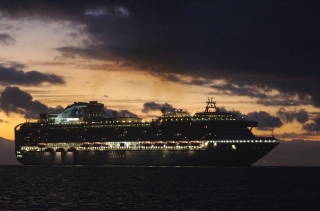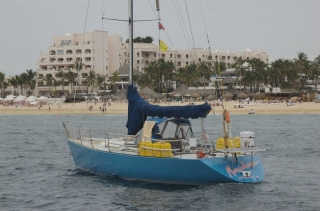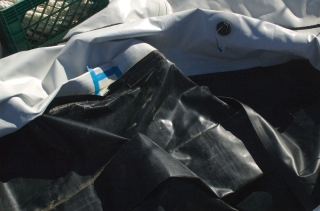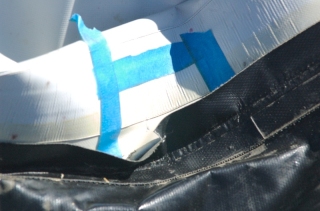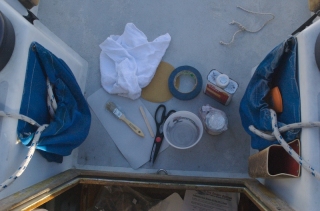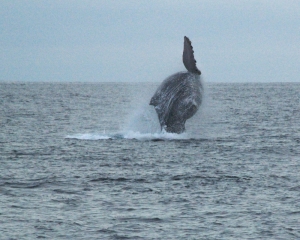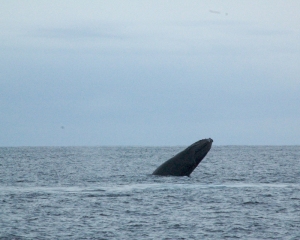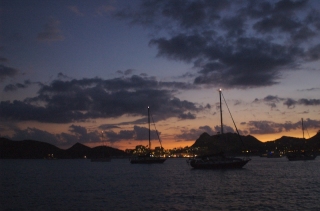Jan 24 2010
Warning: The Death Star has Arrived
Tourism is the blood supply of Cabo San Lucas. It brings money, people, mega yachts, fishermen, and a huge supply of Nationals from all over Mexico to work. Without it, Cabo San Lucas would be the simple fishing town it was 30 years ago. There are two sources of tourism: the time shares and resorts, and cruise ships. On my previous two trips to Cabo San Lucas, I stayed once in a Beach resort, and the second trip, we stayed in a private condo. So, I had already been familiar with the former, and apparently, the largest producer of tourists. Now that I am anchored out in the bay, I have become intimately connected with the latter–the cruise-ships.
If you haven’t seen them before, these vessels are enormous. They are entire floating cities, complete with off-shore Casinos, medical facilities, shopping malls, exercise gymnasiums, your choice of restaurants, bars, discos, and vast neighborhoods of rooms. They hold some in the range of 5000 – 6000 people, and provide services for all of them. They arrive in the bay between 5:45am and 10am, and typically depart between 5pm and no later than 9pm. They never stay–Cabo’s fluky winds would spin them around their anchor dangerously considering that each one is hundreds of feet long. When they arrive at pre-dawn hours, they remind me of the first time the Death Star came into full view in the Star Wars movies–ominous, a giant object filled with people and things.
Once they arrive, the Port Captain sends out a representative to collect the necessary fees and complete paperwork and inspections, and then these huge cities start off-loading their precious tourist cargo. Entire portions of the Cabo San Lucas come alive in anticipation of the wandering groups of week-old friends who have arrived and seek a place to eat, a good margarita, and to purchase some silver or a cuban cigar–all the while engaging in the small-talk of new, but tightly-bound friendships.
In town, everyone knows about the cruise-ships. Everyone knows how many will be in-port today: two, four, just one . . . This is their business–to sell goods and services to tourists. The tourists staying at the resorts will still be sleeping. They invariably took advantage of the nightlife–something the cruise-ship guests miss because of the early departure times. So, the wandering hoards are coming from one source. Others aboard the cruise-ships go directly to the activities they have planned: snorkeling, jet ski rentals, a hi-speed water tour, para-sailing, sailing, and right now, whale watching.
My relationship with the cruise-ships is different, and I think, much more intimate than most. I can literally feel them arrive. Marishanna is a race-boat with no insulation, and so I often hear smaller boats motoring past, but the cavitation of the huge propellors of the cruise ships is unmistakable. Something I can hear from a few miles away. Once they are in port, the clanking of the giant chain links of their anchor is amplified and echoes through the water and into the metal parts of my boat.
It is both eerie and unmistakable . . . and a daily component of my morning routine since I arrived. 6am, clank, clank, clank, clank, clank, clank, clank, start the coffee, go above decks, survey the boat, check the anchor, and, well, you get the idea.
